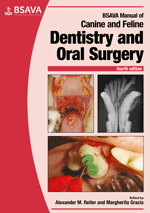
Full text loading...

This chapter provides information on topics not or only briefly covered in previous chapters, including select intra- and postoperative considerations, use of antibiotics, the role of technicians/nurses and dental hygienists, safety in the workplace, equipment maintenance, considerations about dental scaling without anaesthesia, home oral hygiene, and communication with clients and other professionals.
Perioperative considerations in dentistry and oral surgery, Page 1 of 1
< Previous page | Next page > /docserver/preview/fulltext/10.22233/9781905319602/9781905319602.13-1.gif

Full text loading...


































